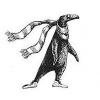I'm working on a speaker stand design for my home theater system and after looking across the WWW I've found a couple of interesting ideas to incorporate into the stands and it includes copper tubing (1/2").
Here's the question:
What's the best method to bend this media (not more than about 45 deg)without crimping it. I'd like to keep the tube from kinking. Make sense?
I'd post pics but this is still in R&D...
Thanks!




 Reply With Quote
Reply With Quote





 Jr.
Jr. 







